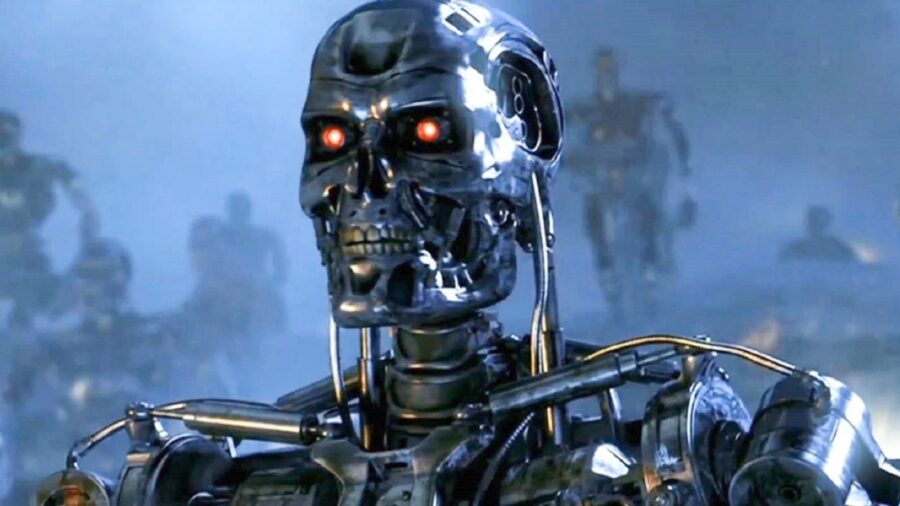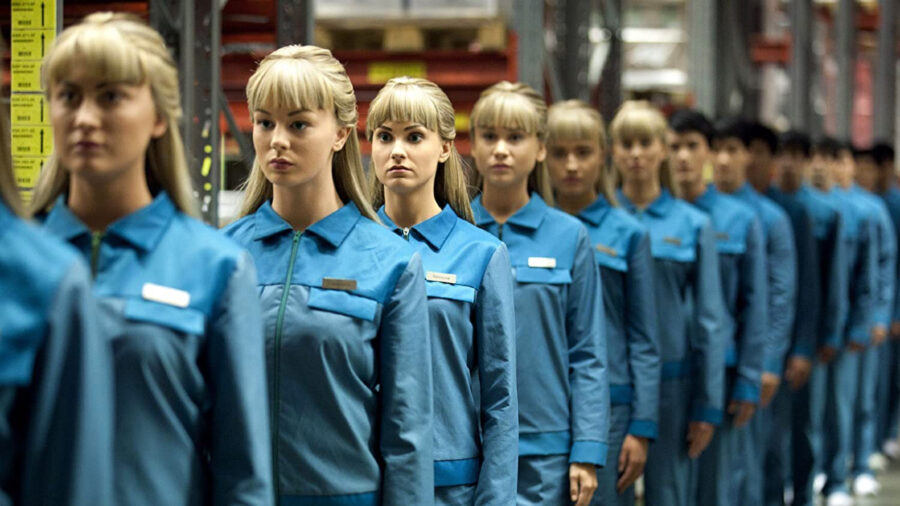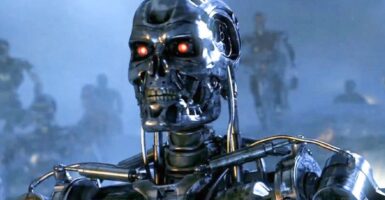OpenAI Robot Is The Next Step Towards Terminators

Has the Terminator era truly begun?
In a stunning (and perhaps terrifying) display of technological prowess, Figure, a robotics startup valued at the measly sum of $2.6 billion, revealed Figure 01: a life-sized humanoid AI robot capable of performing tasks blurring the line between fiction and reality. See Figure 01 in action below.
The robot not only identified and handed over an apple and carried out menial tasks—it responded to human inquiries and described its surroundings.
Figure created their Robo-Frankenstein in collaboration with OpenAI, the brains behind the revolutionary ChatGPT. Veterans from all-star companies like Boston Dynamics, Tesla, Google DeepMind, and Archer Aviation comprise the staff at Figure, and combined their smarts to develop the OpenAI robot.
Figure’s CEO, Brett Adcock, posted a demonstration video in which Figure 01 can be seen performing interactions that many could mistake for a scene from a futuristic movie. The robot not only identified and handed over an apple and carried out menial tasks (like picking up trash and managing dishes sans human intervention)—it responded to human inquiries and described its surroundings.
OpenAI’s role in the “hardware” side of AI, in robotics itself, propels the field into genuinely uncharted waters.
The demonstration incredibly revealed the machine’s capacity for understanding and executing commands. It also highlighted the OpenAI Robot’s potential to perform helpful tasks autonomously, which establishes a new benchmark for AI-driven robotics.
Many may wonder: is the technology behind this marvel seemingly straight out of sci-fi? Adcock revealed that Figure’s onboard cameras, its “eyes,” are enabled by a large vision-language model (VLM) developed by—you guessed it—OpenAI.

Specific details about the intriguing VLM (such as whether it’s a version of GPT-4 or a brand-new model) are scant. However, the implications are crystal clear: OpenAI’s role in the “hardware” side of AI, in robotics itself, propels the field into genuinely uncharted waters.
Moreover, what distinguishes the OpenAI robot most meaningfully is that, unlike its predecessors, the android—sorry, robot—powers all its interactions with end-to-end neural networks. These neural networks help explain why the robot’s interactions seem so natural and organic.
Whether we like it or not, we stand on the cusp of a new era in which robots like Figure’s will significantly impact humanity.
It is truly astounding to consider how this naturalistic quality, provided by end-to-end neural networks, means no trickery was involved in the demonstration video, which was shot in real-time and lacks speed adjustments or remote control.
Indeed, the robot’s genuine capabilities are a little overwhelming.
While the development might feel unnerving, it’s worth noting that the OpenAI robot’s introduction could eliminate unsafe and undesirable jobs. Figure’s aim, lofty indeed, is to roll out humanoid robots at a billion-unit level. Whether we like it or not, we stand on the cusp of a new era in which robots like Figure’s will significantly impact humanity. Figure’s product could, theoretically, help create a future where humans lead happier, more purposeful lives.
Or not.
For the optimists, though, the fact remains that Figure’s CEO declared a sole vow: to avoid military or defense applications completely. Adcock’s goal is to ensure that Figure’s advances in humanoid robotics solely serve the betterment of society; in other words, no Skynet-esque, machine-gunning killer robots, at least for now.
Ultimately, the development of the OpenAI robot places both Figure and OpenAI at the forefront of the humanoid robotics industry. Their shared, privileged place in the spotlight challenges rivals (we’re looking at you, Google) and sets a dramatic precedent for what’s possible. And what’s to come.












